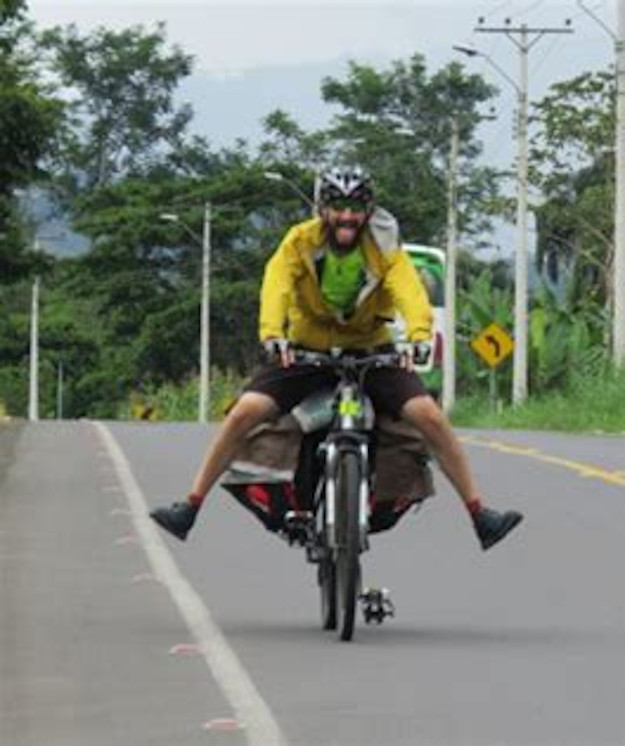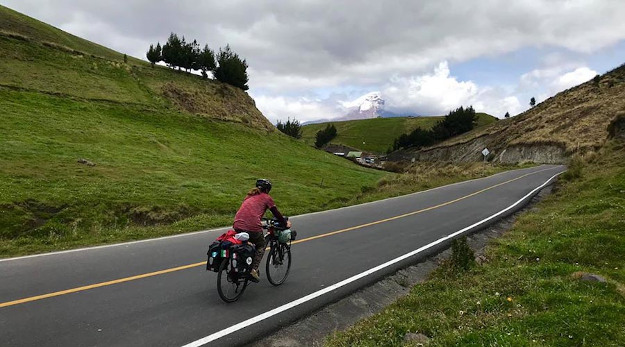Juan Dual is the kind of person who stops at nothing to enjoy life. He lost his stomach, colon, rectum and gall bladder due to a genetic disease which made him more prone to suffer from cancer. Whereas some people can become depressed under so devastating health changes, he took advantage of biking and humor to overcome problems. Indeed, he has a tattoo in his right forearm with the following message: Do not give much thought to things, rather do them.
After successfully being physically cured, he needed to cure his head. Everybody goes through tough issues and sometimes we forget the most important: We only have one life and must enjoy it. A simple and powerful idea. His bicycle helped him to avoid pessimism. The most difficult moment was when he started pedaling after all the surgery. Relatives and friends told him not to do sport sometimes because of fear or ignorance, or simply because love, but he disregarded them. Today he reckons that did the right thing and has rode mainly on Latin American countries and Spain.
As it comes to great trips, he follows the three days rule. He gives away everything he has not used in the first three days of route as a way to avoid overweight. Moreover, he recommends consulting everything about your desired great trip before starting it and do not be afraid asking locals for information.




